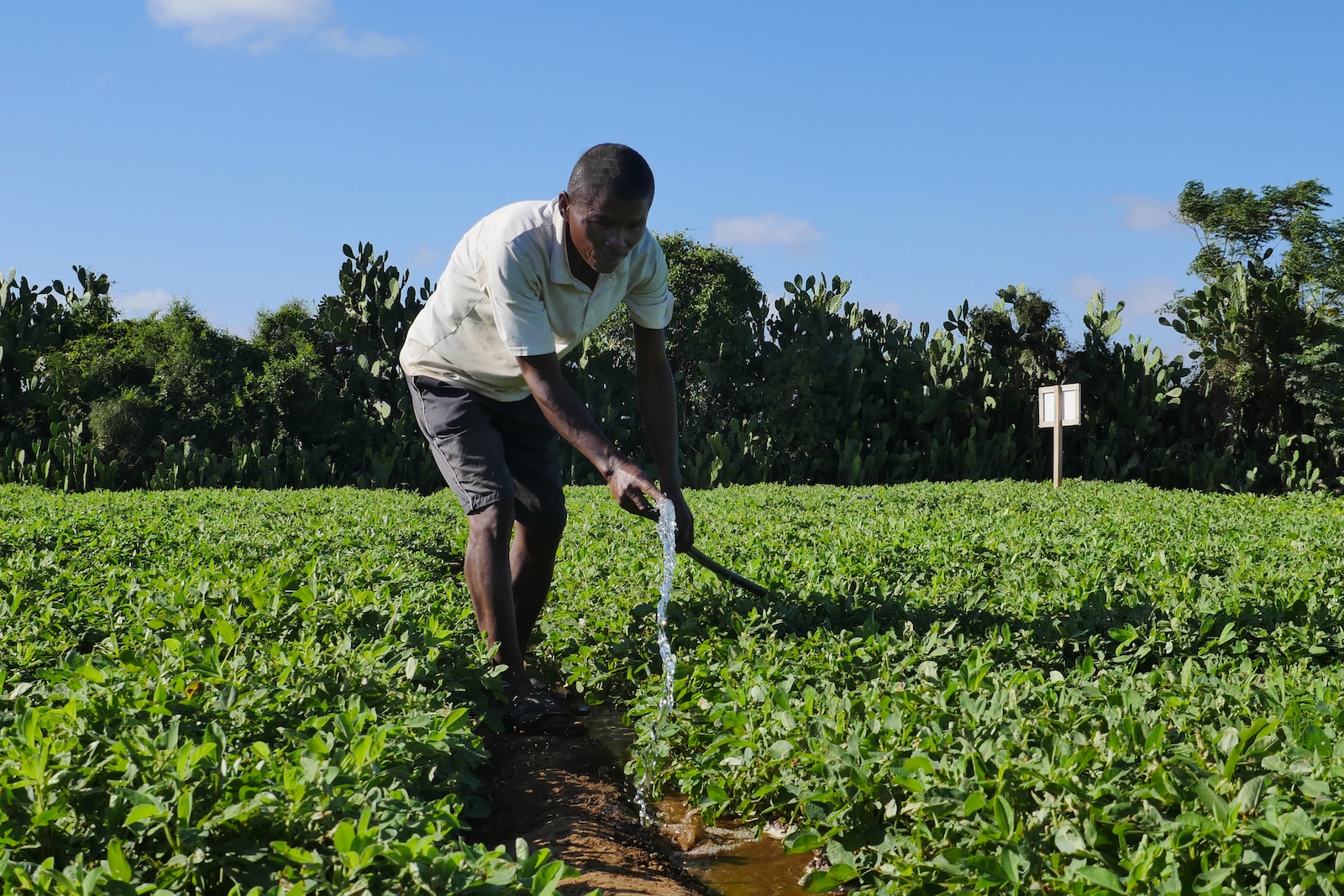A new report finds that one-quarter of the world’s crops are grown in places facing high levels of water stress, water unreliability, or both. The analysis comes from the research nonprofit World Resources Institute, or WRI, and highlights the difficulty of growing enough food to meet rising demand on a warming planet.
One out of every 11 people in the world are hungry, meaning they don’t get enough food to maintain basic health, according to a recent United Nations report. The water challenges outlined in WRI’s latest research could potentially contribute to increased levels of food insecurity, especially as global temperatures continue to rise.
The report looks at both irrigated crops, in which water is transferred from reservoirs to cropland, and rain-fed crops, which receive water through precipitation. The authors relied on WRI’s existing global water risk data and compared it to crop production data from the International Food Policy Research Institute.
Analyzing both sets of data, the report authors found that both irrigated and rain-fed crops face complications when it comes to water access. For example, about 60 percent of irrigated crops by weight come from regions of the world facing high or extremely high levels of water stress. Water stress refers to heightened competition over water resources; it is considered high when 40 percent or more of an area’s local water supply is spoken for by agriculture, energy, industry, and household use.
Areas facing high levels of water stress require robust water management and governance, said Sam Kuzma, one of the report authors. The problem, she said, stems partly from a common tendency to take water for granted and treat it like an endlessly renewable, on-demand resource. “Because we don’t put a value on water, you can irrigate and not pay much at all for the water that you’re using,” said Kuzma, who runs the water data program at WRI. “That means we can be pretty reckless with how we’re growing and in what environments. That’s why you see alfalfa being grown in the desert.”
The majority of the world’s irrigated crops — 72 percent — are grown in just 10 countries, including Brazil, China, India, and the United States, according to WRI. These crops include staples like rice, wheat, and corn that make up a good chunk of the world’s calories.
The high rate of water stress in areas that grow irrigated crops spells trouble for global food security. India, for example, is a major agricultural producer and the world’s largest exporter of rice. The country faces significant water risks; about one-fourth of its total crop production comes from areas using more water than can be naturally replenished, according to WRI’s analysis. Kuzma noted that this can lead to groundwater depletion in parts of the country that rely on a source of water that “just isn’t going to be there forever” if current usage rates continue. “If that’s a key part of our global food supply chain and we no longer have the water to create those commodities, then sorry, everyone is impacted,” she added.

WRI also looked at water unreliability facing rain-fed crops, which make up two-thirds of the world’s food supply. Its analysis found that 8 percent of rain-fed crops by weight face high to extremely high levels of water unreliability, which refers to fluctuations in the annual water supply such as periods of drought and extreme precipitation events caused by climate change. As the planet continues to warm, the amount of rain-fed crops affected by these conditions could jump 40 percent by 2050, compared to 2020 levels. Warming temperatures are also likely to impact irrigated crops, as crops need more water to survive in hotter climates.
Nicole Silk, the global director of freshwater outcomes at the environmental nonprofit The Nature Conservancy, noted that these challenges are having a dire impact on people and communities. Floods and droughts are just as likely to put both “people and crop production in jeopardy,” she said. “We’re increasingly moving towards a world where both people and food production are going to be in places that are particularly water stressed,” she added.
As a sector, agriculture is the number one consumer of freshwater globally, accounting for 70 percent of freshwater withdrawals — the process of removing freshwater from surface-water sources, like rivers and lakes, as well as groundwater sources like underground aquifers. In its latest report, WRI refers to agriculture as the largest driver of water stress. And yet, food has to be grown somewhere, somehow, by someone. Indeed, all signs point to more food needing to be grown, as the global population is projected to reach 10 billion by 2050. The challenge, then, becomes how to grow crops without exacerbating water resources.
“We have to be smarter about what we grow, and we can be smarter about how we grow what we’re growing,” said Silk. She endorsed some of the interventions proposed by WRI as potential solutions — particularly, paying more attention to soil health (because the more moisture soil can retain, the less water farmers need to add to crops). WRI also recommends shifting diets away from meat, which requires a tremendous amount of land and water to produce, towards less water-intensive foods.
Silk also mentioned incorporating more nature-based solutions, “green” strategies that attempt to replicate an ecosystem’s natural rhythms, as opposed to “gray” interventions that involve humans building new infrastructure. The most effective nature-based solutions for managing water on cropland will vary from place to place, depending on geography as well as what’s being grown. Silk observed that “because water is always on the move,” finding the best management strategies will require taking a step back to see the full picture — for instance, reforestation can improve water quality and regulate the water cycle within a landscape. “I think ultimately it becomes a really interesting opportunity for conservationists to meet with farmers and ranchers, to meet with local water regulators and utilities, and also with Indigenous peoples and populations,” she said.
Kuzma noted that farmers know better than anyone — and typically before anyone else — about the water challenges they face, and that WRI’s analysis is really meant to communicate those risks to a broader audience. And she recognized that these management shifts and policy recommendations involve asking farmers to “change how they operate,” which usually requires them to shoulder the financial burden of climate adaptation alone. “We also need to be thinking about what type of financial policies and corporate sponsorship we can be providing” to make those shifts possible, she said.
Silk agreed. “Sometimes farmers and ranchers are willing to change their practices, but they don’t necessarily have the financial resources to do so,” she said. “So if they’re incentivized to change those practices or somebody else can come in and help them, it makes a big difference.”



